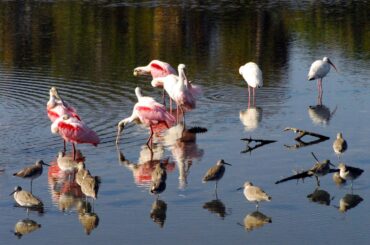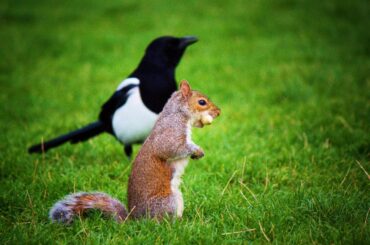Have you ever wondered if eagles are truly faithful to their partners for life? This article explores avian monogamy and these amazing birds’ romantic lives.
Our focus lies in uncovering whether eagles, those symbolizing strength and freedom, indeed mate for life. Our study of eagles’ lifetime mating pledges will illuminate their intricate connections.
Embark on this discovery, learning about the love lives of eagles and the secrets they hold about lifelong partnerships.
The Concept of Monogamy in Birds
Monogamy in the world of birds is like having a lifelong partner, just like how humans often have one partner for life. It means that eagles choose one partner and stay with them during breeding season or for life. But in the bird world, there are different types of monogamy!
First is lifelong monogamy, where a bird pairs up with a mate and sticks together for their whole life. They build nests, raise chicks, and face life’s challenges together. It’s like a love story that lasts a lifetime!
Serial monogamy refers to the second variety, which replaces its mate every breeding season. Every year is like a new boyfriend or girlfriend.
Why is monogamy important for birds? Everything’s about teamwork. When birds pair, they can build nests, care for eggs, and feed babies. This teamwork increases the chances of their babies surviving and growing up strong. For birds, monogamy is like having a reliable partner in their busy bird lives!
Eagle Species and Their Monogamous Behavior
These magnificent birds form strong bonds with their partners as humans do. Explore these fantastic species’ habitats, nesting behaviors, and other fascinating traits.
Bald Eagles
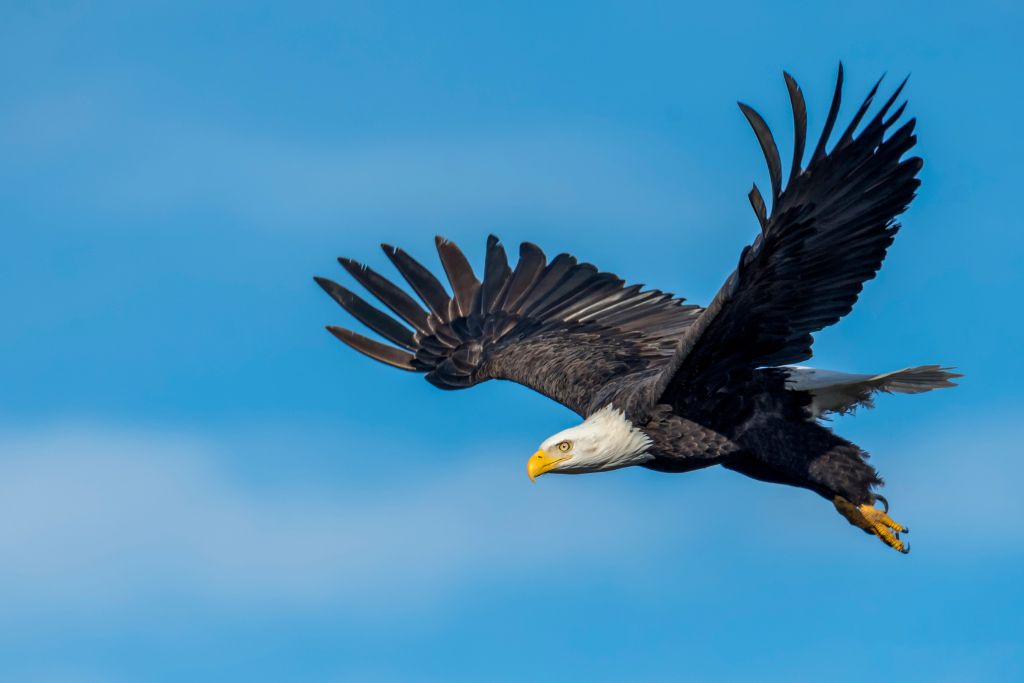
First on our list are bald eagles. They’re known for their impressive white heads and strong beaks. North America is home to these gorgeous birds, especially around lakes and rivers.
Bald eagle pairs stay together for their entire lives. They build large nests and often use the same one year after year.
African Fish Eagles

These birds are excellent hunters and can often be spotted near lakes, rivers, and the coast. They stay with one mate and make large nests in trees near water to capture fish, which is what they eat mostly.
Harpy Eagles
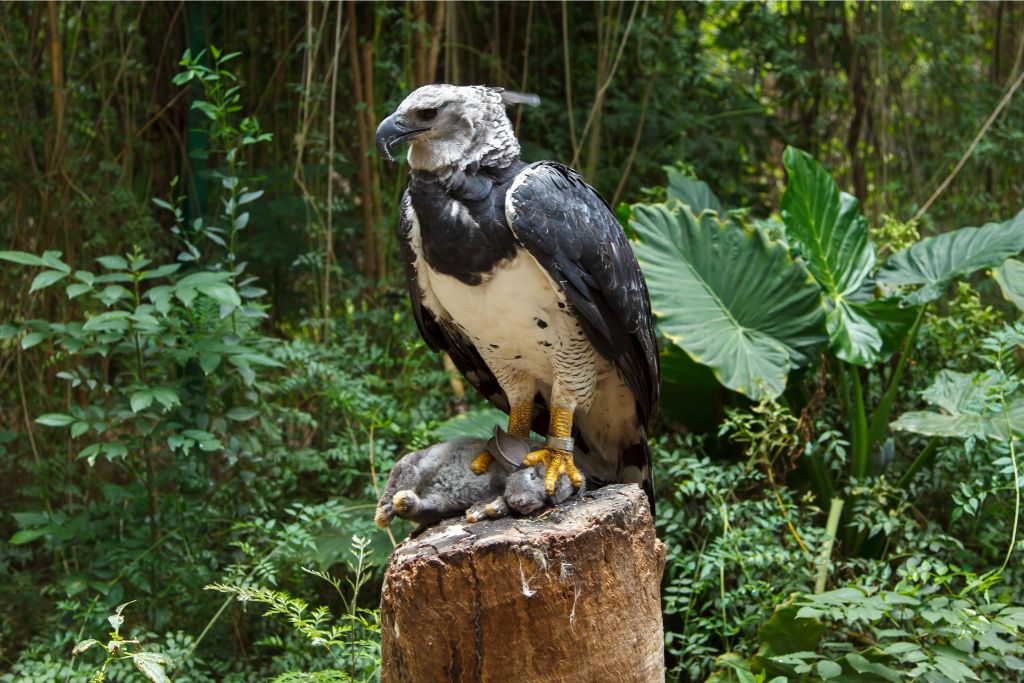
We find the harpy eagles by exploring the depths of the Central and South American rainforests. One of the largest and most powerful eagles in the world, these birds of prey live in the forest canopy.
Harpy eagles are monogamous and create nests in the tallest trees of the rainforest. Their strong bond helps them raise their young in the challenging rainforest environment.
Wedge-Tailed Eagles
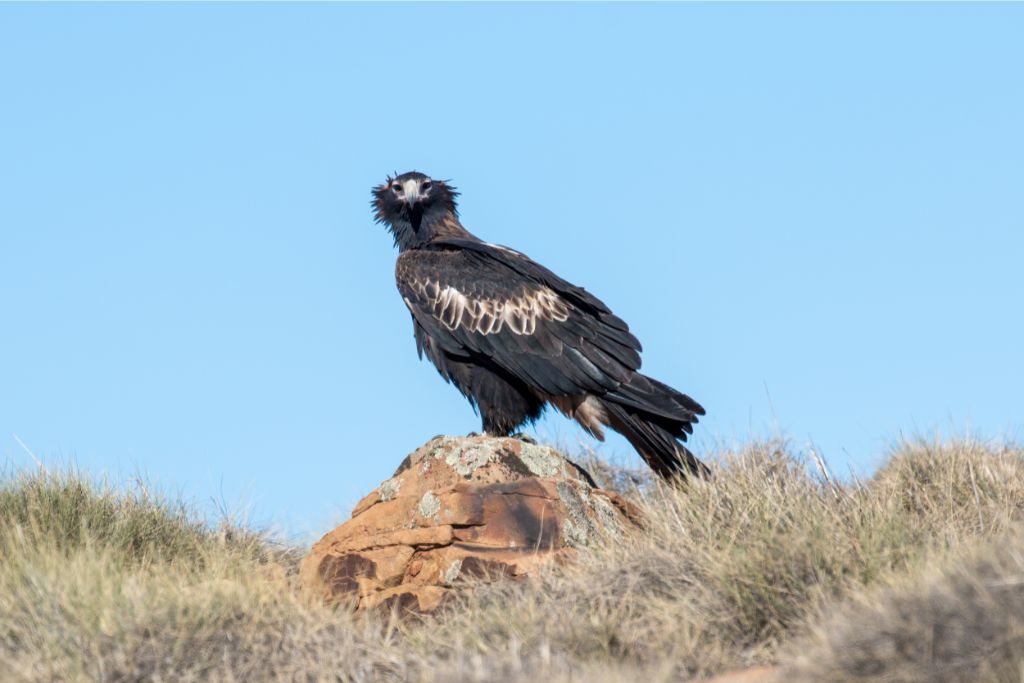
Down under in Australia, the wedge-tailed eagles reign supreme. Among the largest eagles in the world, they form monogamous pairs and have enormous wingspans. These eagles nest in the vast desert, frequently perched on cliffs and rocky ledges for a great view.
The Science Behind Eagle Monogamy
Eagles are magnificent birds of prey, known for their solid and lasting monogamous bonds. These relationships are rooted in both biology and ecology. Biologically, eagles form monogamous pairs because it helps them raise their chicks successfully.
When they work together, they can better protect their nest and hunting territory from other eagles and predators. Eaglets have a better chance of surviving when they are raised by both parents.
From an ecological perspective, eagles often inhabit areas with limited food resources. Monogamy ensures that both partners share the responsibility of finding and catching prey. This coordinated hunting habit helps the eagle family survive in harsh conditions.
Eagles’ monogamous ties and caring for their young are inherited. The development of monogamous behavior in eagles is like a recipe for their survival and the continuation of their species.
Pros and Cons of Monogamy in Eagles
Eagle monogamy is a fascinating aspect of their behavior that scientists have studied closely. This behavior is linked to their strong bond and partnership in raising their young.

Factors Affecting Bald Eagle Pair Bonding
Bald eagle pair bonding is a fascinating aspect of their behavior, influenced by various environmental and biological factors. Here are some key factors affecting bald eagle pair bonding:
- Territory Availability: Bald eagles form bonds when they access territories with abundant food resources, like fish-rich lakes and rivers. The availability of a suitable nesting area plays a crucial role in pair bonding.
- Biological Compatibility: Successful bonding often depends on the biological compatibility between male and female eagles. Genetic factors can influence their ability to reproduce and raise healthy offspring together.
- Mating Rituals: They engage in intricate courtship rituals, including aerial displays and synchronized movements. These rituals help strengthen the bond between pairs and ensure they are well-matched.
- Parenting Experience: Bald eagles that have previous experience in parenting tend to form stronger bonds. They have a better understanding of their roles in raising their chicks.
- Environmental Conditions: Weather and seasonal fluctuations might affect eagles’ hunting and parenting. This, in turn, can impact their pair bonding.
- Human Impact: Human activities can disrupt bald eagle pair bonding. Habitat destruction, like deforestation and urban development, can limit their nesting sites. Pollution, such as water contamination, can affect prey availability and lead to unhealthy chicks.
- Conservation Efforts: Efforts to protect and conserve bald eagle habitats can positively influence their pair bonding. Providing safe nesting sites and reducing human disturbances can contribute to stronger eagle bonds.
- Predator Threats: The presence of predators, like raccoons or other birds of prey, can pose a threat to bald eagle nests. Pair bonding is influenced by the eagles’ ability to defend their nest and offspring from potential threats.
Final Thoughts
Bald eagles, these magnificent birds of prey, have a solid inclination to mate for life. This lifelong partnership symbolizes loyalty and dedication, setting a remarkable example for humans.
The significance of their mating behavior extends beyond their relationship, as it plays a crucial role in their survival. By staying together, they ensure better protection of their nest and chicks, contributing to the conservation of their species.
FAQs
What Happens When an Eagle Mate Dies?
The surviving eagle mourns by crying out, circling the nest, and even hunting for the deceased mate. Eventually, the surviving eagle may find a new mate to breed and raise kids. Eagles have strong survival and reproduction instincts. Therefore, they usually adjust to mate loss.
Why Do Eagles Do a Death Spiral?
Eagles engage in a death spiral during courtship or territorial disputes. This aerial display involves two eagles locking talons, tumbling toward the ground, and breaking apart just before hitting it. It’s believed to strengthen their pair bond or deter intruders.
What Animal Also Dies When Their Partner Dies?
Swans, penguins, and albatrosses maintain monogamous partnerships. When one of these animals loses their companion, they may die from grief and loneliness.



